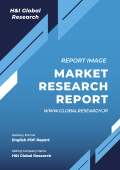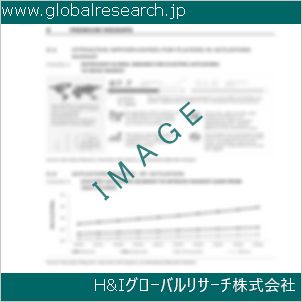1 Report Overview
1.1 Study Scope
1.2 Market Analysis by Type
1.2.1 Global Virus-Induced Asthma Treatment Market Size Growth Rate by Type: 2018 VS 2022 VS 2029
1.2.2 Oral
1.2.3 Injection
1.3 Market by Application
1.3.1 Global Virus-Induced Asthma Treatment Market Growth by Application: 2018 VS 2022 VS 2029
1.3.2 Hospital
1.3.3 Clinic
1.3.4 Others
1.4 Study Objectives
1.5 Years Considered
1.6 Years Considered
2 Global Growth Trends
2.1 Global Virus-Induced Asthma Treatment Market Perspective (2018-2029)
2.2 Virus-Induced Asthma Treatment Growth Trends by Region
2.2.1 Global Virus-Induced Asthma Treatment Market Size by Region: 2018 VS 2022 VS 2029
2.2.2 Virus-Induced Asthma Treatment Historic Market Size by Region (2018-2023)
2.2.3 Virus-Induced Asthma Treatment Forecasted Market Size by Region (2024-2029)
2.3 Virus-Induced Asthma Treatment Market Dynamics
2.3.1 Virus-Induced Asthma Treatment Industry Trends
2.3.2 Virus-Induced Asthma Treatment Market Drivers
2.3.3 Virus-Induced Asthma Treatment Market Challenges
2.3.4 Virus-Induced Asthma Treatment Market Restraints
3 Competition Landscape by Key Players
3.1 Global Top Virus-Induced Asthma Treatment Players by Revenue
3.1.1 Global Top Virus-Induced Asthma Treatment Players by Revenue (2018-2023)
3.1.2 Global Virus-Induced Asthma Treatment Revenue Market Share by Players (2018-2023)
3.2 Global Virus-Induced Asthma Treatment Market Share by Company Type (Tier 1, Tier 2, and Tier 3)
3.3 Players Covered: Ranking by Virus-Induced Asthma Treatment Revenue
3.4 Global Virus-Induced Asthma Treatment Market Concentration Ratio
3.4.1 Global Virus-Induced Asthma Treatment Market Concentration Ratio (CR5 and HHI)
3.4.2 Global Top 10 and Top 5 Companies by Virus-Induced Asthma Treatment Revenue in 2022
3.5 Virus-Induced Asthma Treatment Key Players Head office and Area Served
3.6 Key Players Virus-Induced Asthma Treatment Product Solution and Service
3.7 Date of Enter into Virus-Induced Asthma Treatment Market
3.8 Mergers & Acquisitions, Expansion Plans
4 Virus-Induced Asthma Treatment Breakdown Data by Type
4.1 Global Virus-Induced Asthma Treatment Historic Market Size by Type (2018-2023)
4.2 Global Virus-Induced Asthma Treatment Forecasted Market Size by Type (2024-2029)
5 Virus-Induced Asthma Treatment Breakdown Data by Application
5.1 Global Virus-Induced Asthma Treatment Historic Market Size by Application (2018-2023)
5.2 Global Virus-Induced Asthma Treatment Forecasted Market Size by Application (2024-2029)
6 North America
6.1 North America Virus-Induced Asthma Treatment Market Size (2018-2029)
6.2 North America Virus-Induced Asthma Treatment Market Growth Rate by Country: 2018 VS 2022 VS 2029
6.3 North America Virus-Induced Asthma Treatment Market Size by Country (2018-2023)
6.4 North America Virus-Induced Asthma Treatment Market Size by Country (2024-2029)
6.5 United States
6.6 Canada
7 Europe
7.1 Europe Virus-Induced Asthma Treatment Market Size (2018-2029)
7.2 Europe Virus-Induced Asthma Treatment Market Growth Rate by Country: 2018 VS 2022 VS 2029
7.3 Europe Virus-Induced Asthma Treatment Market Size by Country (2018-2023)
7.4 Europe Virus-Induced Asthma Treatment Market Size by Country (2024-2029)
7.5 Germany
7.6 France
7.7 U.K.
7.8 Italy
7.9 Russia
7.10 Nordic Countries
8 Asia-Pacific
8.1 Asia-Pacific Virus-Induced Asthma Treatment Market Size (2018-2029)
8.2 Asia-Pacific Virus-Induced Asthma Treatment Market Growth Rate by Region: 2018 VS 2022 VS 2029
8.3 Asia-Pacific Virus-Induced Asthma Treatment Market Size by Region (2018-2023)
8.4 Asia-Pacific Virus-Induced Asthma Treatment Market Size by Region (2024-2029)
8.5 China
8.6 Japan
8.7 South Korea
8.8 Southeast Asia
8.9 India
8.10 Australia
9 Latin America
9.1 Latin America Virus-Induced Asthma Treatment Market Size (2018-2029)
9.2 Latin America Virus-Induced Asthma Treatment Market Growth Rate by Country: 2018 VS 2022 VS 2029
9.3 Latin America Virus-Induced Asthma Treatment Market Size by Country (2018-2023)
9.4 Latin America Virus-Induced Asthma Treatment Market Size by Country (2024-2029)
9.5 Mexico
9.6 Brazil
10 Middle East & Africa
10.1 Middle East & Africa Virus-Induced Asthma Treatment Market Size (2018-2029)
10.2 Middle East & Africa Virus-Induced Asthma Treatment Market Growth Rate by Country: 2018 VS 2022 VS 2029
10.3 Middle East & Africa Virus-Induced Asthma Treatment Market Size by Country (2018-2023)
10.4 Middle East & Africa Virus-Induced Asthma Treatment Market Size by Country (2024-2029)
10.5 Turkey
10.6 Saudi Arabia
10.7 UAE
11 Key Players Profiles
11.1 AstraZeneca plc
11.1.1 AstraZeneca plc Company Detail
11.1.2 AstraZeneca plc Business Overview
11.1.3 AstraZeneca plc Virus-Induced Asthma Treatment Introduction
11.1.4 AstraZeneca plc Revenue in Virus-Induced Asthma Treatment Business (2018-2023)
11.1.5 AstraZeneca plc Recent Development
11.2 Sanofi SA
11.2.1 Sanofi SA Company Detail
11.2.2 Sanofi SA Business Overview
11.2.3 Sanofi SA Virus-Induced Asthma Treatment Introduction
11.2.4 Sanofi SA Revenue in Virus-Induced Asthma Treatment Business (2018-2023)
11.2.5 Sanofi SA Recent Development
11.3 Novartis AG
11.3.1 Novartis AG Company Detail
11.3.2 Novartis AG Business Overview
11.3.3 Novartis AG Virus-Induced Asthma Treatment Introduction
11.3.4 Novartis AG Revenue in Virus-Induced Asthma Treatment Business (2018-2023)
11.3.5 Novartis AG Recent Development
11.4 Mylan NV
11.4.1 Mylan NV Company Detail
11.4.2 Mylan NV Business Overview
11.4.3 Mylan NV Virus-Induced Asthma Treatment Introduction
11.4.4 Mylan NV Revenue in Virus-Induced Asthma Treatment Business (2018-2023)
11.4.5 Mylan NV Recent Development
11.5 Regeneron
11.5.1 Regeneron Company Detail
11.5.2 Regeneron Business Overview
11.5.3 Regeneron Virus-Induced Asthma Treatment Introduction
11.5.4 Regeneron Revenue in Virus-Induced Asthma Treatment Business (2018-2023)
11.5.5 Regeneron Recent Development
11.6 F.Hoffman-La Roche Ltd.
11.6.1 F.Hoffman-La Roche Ltd. Company Detail
11.6.2 F.Hoffman-La Roche Ltd. Business Overview
11.6.3 F.Hoffman-La Roche Ltd. Virus-Induced Asthma Treatment Introduction
11.6.4 F.Hoffman-La Roche Ltd. Revenue in Virus-Induced Asthma Treatment Business (2018-2023)
11.6.5 F.Hoffman-La Roche Ltd. Recent Development
11.7 Teva Pharmaceuticals Industries Ltd.
11.7.1 Teva Pharmaceuticals Industries Ltd. Company Detail
11.7.2 Teva Pharmaceuticals Industries Ltd. Business Overview
11.7.3 Teva Pharmaceuticals Industries Ltd. Virus-Induced Asthma Treatment Introduction
11.7.4 Teva Pharmaceuticals Industries Ltd. Revenue in Virus-Induced Asthma Treatment Business (2018-2023)
11.7.5 Teva Pharmaceuticals Industries Ltd. Recent Development
11.8 Merck & Co.
11.8.1 Merck & Co. Company Detail
11.8.2 Merck & Co. Business Overview
11.8.3 Merck & Co. Virus-Induced Asthma Treatment Introduction
11.8.4 Merck & Co. Revenue in Virus-Induced Asthma Treatment Business (2018-2023)
11.8.5 Merck & Co. Recent Development
11.9 Cipla Limited
11.9.1 Cipla Limited Company Detail
11.9.2 Cipla Limited Business Overview
11.9.3 Cipla Limited Virus-Induced Asthma Treatment Introduction
11.9.4 Cipla Limited Revenue in Virus-Induced Asthma Treatment Business (2018-2023)
11.9.5 Cipla Limited Recent Development
11.10 GlaxoSmithKline plc.
11.10.1 GlaxoSmithKline plc. Company Detail
11.10.2 GlaxoSmithKline plc. Business Overview
11.10.3 GlaxoSmithKline plc. Virus-Induced Asthma Treatment Introduction
11.10.4 GlaxoSmithKline plc. Revenue in Virus-Induced Asthma Treatment Business (2018-2023)
11.10.5 GlaxoSmithKline plc. Recent Development
12 Analyst’s Viewpoints/Conclusions
13 Appendix
13.1 Research Methodology
13.1.1 Methodology/Research Approach
13.1.2 Data Source
13.2 Disclaimer
13.3 Author Details
| ※参考情報 ウイルス性喘息は、ウイルス感染が引き金となって喘息の症状を誘発または悪化させる状態を指します。特に、風邪やインフルエンザウイルスなどの上気道感染が、喘息患者において喘息発作を引き起こすことが多く見られます。ウイルス感染は、喘息の急性増悪の主要な原因とされており、特に小児期においては、喘息の発症や進行に大きな影響を与えることが知られています。 ウイルス性喘息の特徴として、まずその発症のメカニズムを挙げることができます。ウイルスが気道に感染すると、免疫系が反応し、炎症を引き起こします。この炎症は気道の過敏性を高め、気道の収縮や粘液分泌の増加を引き起こします。その結果、喘息の症状である咳、喘鳴、呼吸困難などが現れます。特に、RSウイルスやコロナウイルス、アデノウイルスなどが関与していることが多いとされています。 ウイルス性喘息にはいくつかのタイプがありますが、大きく分けるとまず、既に喘息を抱える患者がウイルスに感染することで症状が悪化する場合と、ウイルス感染を契機に新たに喘息の症状が現れる場合があります。前者は特に成人や慢性喘息の患者に多く見られ、後者は小児において喘息の発症と関連していることがよくあります。このように、ウイルス性喘息は多様な患者層に影響を与え、その治療アプローチも異なる場合があります。 ウイルス性喘息の治療は、主に喘息の症状を軽減し、呼吸機能を改善することを目的としています。そのためには、抗ウイルス薬、抗炎症薬、気管支拡張薬などが用いられることがあります。抗ウイルス薬は直接的にウイルスを排除することを目的とし、特に重症感染の場合に用いられます。一方、抗炎症薬、特に吸入ステロイドは、気道の炎症を収束させるために常用され、喘息治療における中心的な役割を果たします。気管支拡張薬は、急性の喘息発作時に迅速に気道を広げる効果があり、症状緩和に重要です。 また、近年ではウイルス性喘息に関連する新しい治療法が開発されてきています。例えば、生物学的製剤は特定の免疫経路を標的とした治療法であり、重症喘息の患者において効果が示されています。これらの治療法は、従来の治療に抵抗性を示す患者にも新たな治療の選択肢を提供します。 さらに、関連技術として、ウイルス感染の早期検出と診断技術も重要です。PCR法をはじめとする分子診断技術は、迅速かつ精度高くウイルスの種類を特定することができ、これにより適切な治療方針を決定する上で有用です。また、ウェアラブルデバイスやスマートフォンアプリを用いた患者モニタリングも進展しており、患者自身の症状や治療への反応をリアルタイムで把握することが可能となっています。 ウイルス性喘息の治療には、個々の患者の病態に応じたパーソナライズドメディスンが求められます。これは、患者一人ひとりに最適な治療を提供するためのアプローチであり、将来的にはより効果的な治療が期待されます。特に、遺伝的背景、環境要因、生活習慣などを考慮に入れた治療方針は、患者のQOL(生活の質)の向上につながると考えられます。 なお、治療だけでなく、予防の視点も重要です。ウイルス性喘息を予防するためには、ウイルス感染の予防、すなわち手洗いやマスクの着用が挙げられます。特に学校や保育園などの集団生活の中では、感染が拡大しやすいため、気を付ける必要があります。また、季節性インフルエンザの予防接種も、喘息患者においては有用であることが示されています。 結論として、ウイルス性喘息は多様な要因が絡み合った病態であり、その治療には包括的なアプローチが求められます。新しい治療法の開発や、早期診断技術の進歩によって、より効果的な管理が可能となることが期待されます。ウイルス感染のリスクを軽減し、喘息の症状を最小限に抑えるためには、患者自身のセルフマネジメントも欠かせません。今後の研究や実践を通じて、ウイルス性喘息の理解が深まることを期待しています。 |
❖ 免責事項 ❖
http://www.globalresearch.jp/disclaimer












